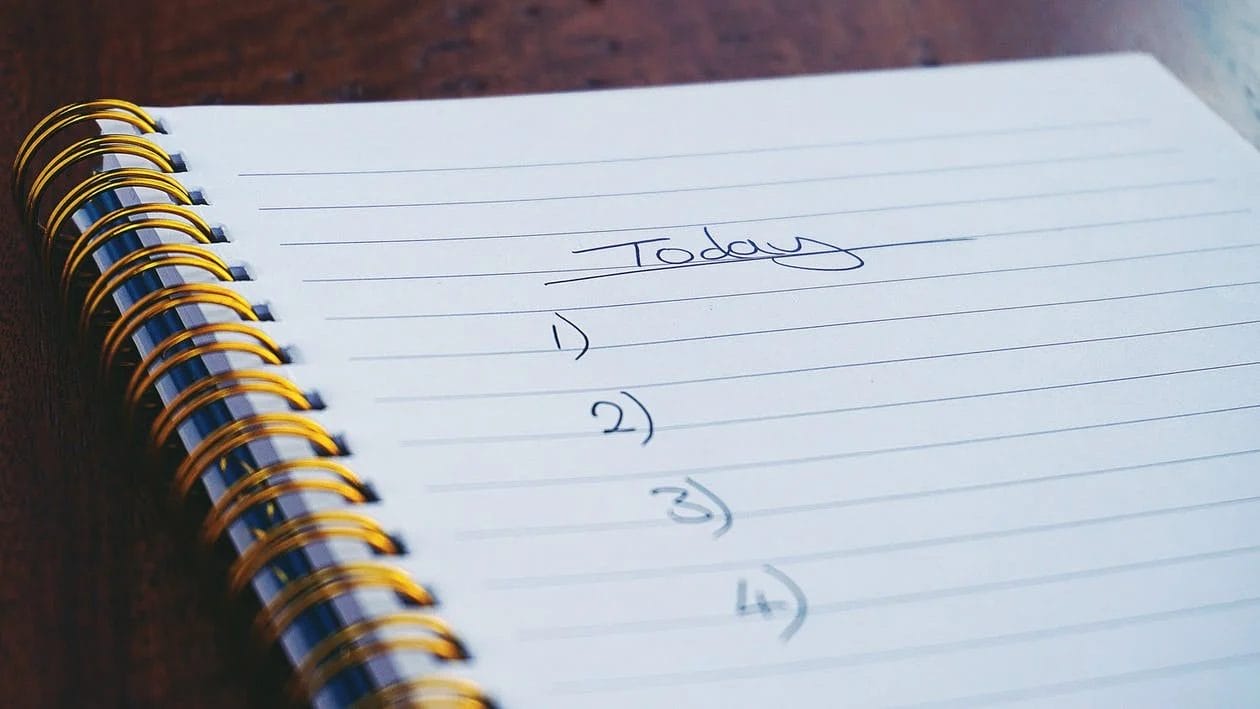What You Should Include In Your Daily Checklist for Caregivers (With Customizable Template)
Caregivers wear multiple hats — that of a nurse, a companion, a chef, and even a housekeeper. With so many roles and responsibilities to maintain at once, often spread across multiple clients, one of the most beneficial tools a home care agency can provide its employees is a daily checklist for caregivers.
A caregiver’s daily checklist acts as a roadmap to individual client care. A printable caregiver daily checklist template, like what you can find below, can be customized to encompass the variety of care tasks employees can anticipate from one patient to the next. They’re one of the simplest methods to ensure quality and consistency of care, especially when caregivers are out in the field.
It’s important to understand the power of a well-thought-out daily checklist for caregivers to ensure day-to-day operations run smoothly. Read on to discover what a daily caregiver checklist should contain and a printable caregiver daily checklist template for your home care agency.
What is a Daily Checklist for Caregivers?
A daily checklist for caregivers is a tool for home care agencies to outline, track, and report the various services a caregiver must administer to a single client. As the name suggests, a daily checklist covers caregiver duties that must be completed daily. Such tasks address each patient’s personalized needs to ensure ongoing quality care and the effective monitoring of any medical or physical conditions.
Regardless of patient age or condition type, a daily checklist for caregivers should be created for each patient to encompass all aspects of necessary care, including both physical and emotional needs. A checklist must be established for the morning, afternoon, and evening schedules, along with caregiver schedules at all points of the day, to support consistency in ongoing operations.
Home care agencies looking to develop their own caregiver daily checklists can choose from either physical or digital checklists. Many client management software solutions allow employers to construct individual caregiver checklists and attach them to each client profile. This ease of access assists in better communication of caregiving responsibilities to employees while in the field.
Why are Caregiver Daily Checklists Important?
Caregiver daily checklists are essential for any home health agency as they provide operational support to various aspects of your business. Caregiver daily checklists are critical in consistently and effectively addressing all care recipient needs. These include physical, psychological, and emotional care tasks that will need to be completed by caregivers daily.
A daily caregiver checklist also bridges the gap between a professional caregiver and family caregivers. It’s common for patient care to be divided between professionals and family members, especially for high-needs patients. A reliable caregiver checklist ensures consistency of care every day, no matter what type of caregiver is at home with the patient.
Not to mention, daily checklists for caregivers are incredibly helpful when dealing with patients that move across different care settings. From skilled nursing home facilities to hospital outpatient clinics to home health care, a daily checklist can unify patient care. Plus, the availability of a daily checklist can minimize the communication required to establish regular care protocols.
What to Consider When Creating Your Caregiver Checklist
Now that we’ve discussed the value of a daily checklist and how it can benefit homecare agencies and clients alike, we can move along to the actual checklist components. When building an individual patient checklist, the best place to start is with the care recipient’s current condition and care plan.
Understanding a client’s specific medical, physical, or mental needs can help an agency pair them with the best caregiver for their unique needs. Another aspect to factor in is whether a patient will need specialized care due to their stage of life or a disability. For instance, some clients may not require medical-based care, whereas others are best suited to a licensed, qualified nurse.
Individual client needs will also define the patient’s scope of care. Will they need medical care and assistance with home exercises, or will they require help with housekeeping, errands, or transportation? A patient’s preferences and concerns should be documented alongside the scope of care for caregiver reference.
Lastly, it’s key to include important personal details for each patient. Essential information like emergency contacts and phone numbers, relevant medical providers, health insurance policy details, personal identity documents, social security numbers, and payment information must be stored securely.
Caregiver Checklist: What to Include
With various caregiver daily checklist components in mind, it’s time to review each individual caregiver task a patient may require. As patient needs and treatment focus vary from patient to patient, consider this list of the most common caregiver tasks to include in your caregiver template.
Personal Care
With many home care patients, the top priorities for caregivers to focus on involving various personal care needs. A patient’s age and health condition often indicate that hygiene and personal maintenance may decline without proper care. Failure to uphold proper personal care can result in additional health concerns and negatively influence treatment quality.
When outlining personal care tasks, be sure to consider responsibilities like:
- Personal hygiene needs, including sponge baths, showers, skincare, nail care, and oral hygiene.
- Toileting needs, including urinary drainage, catheter or colostomy bag management, and assistance going to the bathroom.
- Providing assistance to prepare for the day, including picking out clothes and getting dressed, applying makeup, and personal grooming like shaving or hair styling.
Health Monitoring and Medication Management
As with personal care needs, patient health is a caregiver’s top priority. With caregivers often working with patients dealing with one or more health conditions, all monitoring and medication needs must be thoroughly outlined to support patient safety and well-being.
When working your way through your caregiver’s daily checklist, be sure to consider:
- Vital monitoring needs, including blood pressure, blood sugar, heart rate, body temperature, and respiration rate.
- Medication management needs include daily frequency, dosage amounts, and specific administration times.
- Mobility health needs, including physical therapy exercises, walking, and swim time.
Nutrition
Nutritional needs must accompany patient health monitoring and medication management needs. Without the right balance of nutrition and health management, patient vitals — including blood sugar — can quickly plummet. Poor planning for nutrition can induce potentially dangerous health concerns, especially in patients with pre-existing medical conditions.
After listing out health monitoring and medication management tasks, consider these nutritional tasks next:
- Preparation of meals, including breakfast, lunch, and dinner.
- Feeding assistance, including facilitating hand-eye coordination.
- Grocery shopping and organization of pantry and fridge to encourage easy accessibility.
- Maintaining proper fluid intake, including daily water consumption.
Appointments and Errands
For many clients, home care services are requested in part for assistance navigating daily appointments and errands. Many older adults and disabled patients no longer have the ability to transport themselves to nearby locations via personal or public transportation. So, your caregivers must be responsible for helping accomplish these tasks safely and enjoyably.
To ensure all client appointments and general errands are met, consider these tasks when constructing a caregiver daily checklist:
- Organizing and scheduling medical appointments.
- Providing bill payment, including communication assistance with healthcare providers.
- Assistance with grocery shopping, including putting away food once purchased.
- Arranging transportation resources if needed, including shuttle services.
Housekeeping
As with personal transportation, there may come a time in a patient’s life when everyday household chores become a challenge. To support patient health and well-being, clients seeking home care services may also request assistance with various housekeeping needs.
Depending on the size and location of a patient’s home, there can be a wide variety of housekeeping needs to consider when constructing a caregiver’s daily checklist, such as:
- Maintaining clean linens, including completing laundry and clean bedding.
- Removing waste from the home, including taking out the trash.
- Cleaning any bodily fluids from home surfaces, including bathroom sanitization.
- Enabling routine communication, including retrieving mail.
Companionship
All tasks aside, sometimes the sole reason a client or family of a patient will seek home care services is to simply provide companionship. Maintaining a social life is a crucial component of a person’s general quality of life regardless of age. A daily caregiver can help a patient stay in motion while also contributing to their overall happiness and health.
For patients seeking companionship services, homecare agencies should consider patient preferences and schedule companionship activities, including but not limited to:
- Getting some fresh air, including taking a walk.
- Providing entertainment, including assisting with reading.
- Helping to be more social, including going out and having a meal at a restaurant.
- Providing assistance and transportation to community outings, including art and exercise classes.
Equip Your Caregivers with Daily Guidance for Overall Agency Success
With what seems to be countless items that could be placed on a single caregiver’s daily checklist, home health agencies need a software solution that can help seamlessly construct, manage, and securely share patient checklists. Alongside our printable caregiver daily checklist template, FirstVisit software can help manage caregiver checklists and your home care agency at large.
From caregiver and client management to electronic visit verification, home health care software can be used to streamline various daily home care agency processes for next-level productivity. With pricing tailored to your different needs, software solutions can be customized to your number of active clients, so you pay for what you need and nothing more. To learn how to increase caregiver productivity and efficiency, schedule a free consultation today.



